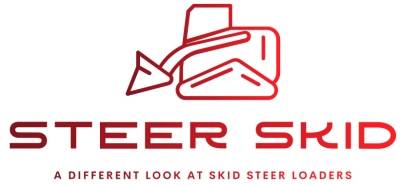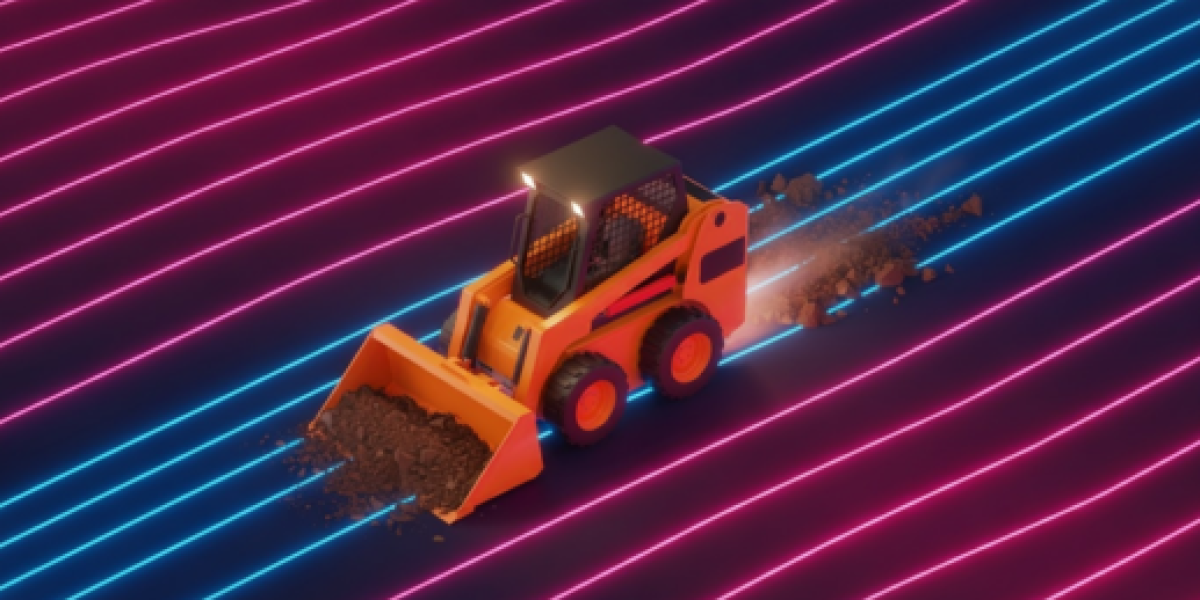Skid steer buckets are key accessories that increase skid steer loaders’ flexibility and power. The buckets are available in various types, each of which is meant for specific tasks and materials. The all-purpose bucket is widely used since it is perfect for a lot of different jobs, such as carrying away loose materials like soil, gravel, and others.
Mostly, these types are characterized by their flat bottom and straight side when a loading and unloading process is made possible in a highly efficient way. There are a number of different widths available to fit different skid steer models and jobs as well. The other more common type is the heavy-duty bucket, which has been strengthened to do more difficult ones.
Heavy-duty buckets of this kind, for instance, come with thicker steel and may also feature additional wear plates to be able to endure the tough work of heavy lifting and carrying off abrasive materials.
Heavy-duty buckets are indispensable when a project requires the use of more sturdy equipment, such as those in the construction and destruction industry.
Furthermore, there are specific buckets like the low-profile bucket that improves operability in tight spaces and maximizes visibility and the high-capacity bucket, which makes it possible for the operator to pick up more without causing the machine to lose equilibrium and stability.
Knowledge of different buckets is essential if you want to choose the most suitable one for your specific purposes.
Maintaining Your Skid Steer Bucket New and Safe
Using a skid steer bucket of a suitable size and capacity is very important to profit from the operation, ensure safety, and avoid damage to people and equipment. The size of the bucket is to match the specifications of the skid steer loader, like the lifting capacity and hydraulics of the machine. A bucket too large can overload the machine, causing potential mechanical failures or a safety hazard.
At the same time, a bucket that is too small may not be able to carry out the work effectively, thus increasing the person’s effort and reducing the productivity of the work. Capacity is also a very important point of assessment. It is the weight and also the volume of materials that must be considered here.
Say, for example, you are most of the time handling lightweight materials like mulch; a larger bucket would be more beneficial for it allows more materials to be transferred in a single pass.
The acquisition of a skid steer bucket is an effective method to carry out digging and lifting operations with the help of a skid steer loader. An operator should make a few general considerations on the choice and use of a skid steer attachment based on the type of material to be moved, so, for instance, bucket teeth should be used for handling solid and compacted materials and the non-teeth side for soft materials. This requires
For instance, when you are tasked with lifting heavier materials such as gravel or concrete, the skid steer may require a smaller bucket that has a higher capacity rating in order to safely be able to lift and transport the material. A good thing to consider might also be visualizing the amount of the load in the cubic yards of the bucket to make sure you are not overloading the machine during the operation of the project.
Tips for Proper Attachment and Detachment of Skid Steer Buckets
Knowing how to properly attach and detach the skid steer bucket is not only a safety matter but also an efficiency matter. At the beginning of the process, it is a must to have the skid steer parked on a level surface with an engine that is switched off. This will prevent the machine from moving unintentionally in attaching or detaching operations.
During attachment of such a construction tool as a skid steer’s bucket, you should not only align the bucket with the mounting plate but also make sure the pins fit correctly into the holes. There are quite a few modern skid steers that are equipped with quick-attach systems, which enable their operators to replace the attachments without leaving the cab. On the other hand, the process of removing a bucket is done step by step.
As the first step, after lowering the bucket to the ground, slightly tilt it forward to loosen the fit of the attachment pins. This step will allow easier disengagement of the pins without using force. Following the confirmation of the installation of all the safety devices, the operator can take the bucket off by activating the release lever or pressing the appropriate button on the control panel.
Similar to the regular inspections of the vehicle, regularly checking the attachment points also helps avoid issues during attachment and detachment operations, thus guaranteeing smooth work.
Maintenance and Care for Skid Steer Buckets to Ensure Longevity
Skid steer buckets shall be well-maintained to ensure the long service and efficient performance of the tool. Regular checks are the first step in the process and will reveal various issues such as wear or punctures in the metal. These problems are serious because, if not shown any attention, they will lead to the weakening of the bucket’s frame and finally to much bigger problems than before.
In addition, operators should pay special attention to the cutting edge of the bucket, the part most affected during the work when it becomes worn due to the use of abrasive materials. The custom should be to replace it or sharpen it every time the performance efficiency is on the lower side. In addition to the above, frequent cleaning is a must during maintenance.
It is very important to remove the debris or any other material buildup from the inside and outside surfaces after each use. This will bring benefits not only by stopping corrosion but also because the bucket will be lightweight and maneuverable. Moreover, users should be diligent in the lubrication of the moving parts, such as pins and hinges, to reduce wear and tear.
Through maintenance activities such as inspections, cleaning, and lubrication, users are able to experience skid steer buckets that have a longer working life.
Techniques for Efficient Operation of Skid Steer Buckets
If the skid steer bucket is to be operated in an efficient way, two things must be taken into account: that is, we should operate the machine skillfully and, at the same time, observe the proper operation rules. Low center of gravity maintenance is one of the techniques used to keep the machine energy-effective while doing the job. In this method, the operator keeps the bucket near the ground while on uneven terrain or lifting heavy objects.
Operators can also secure the machine to reduce the risk of turning over and leaning the machine on one side. Another important thing to remember is that it is necessary to always be careful and not use faster or less force than necessary while lifting or lowering the slurry with the bucket. Additionally, there may be the use of better practices of loading to achieve the highest possible output.
While the operators are putting the materials into the bucket, it is important that the approach be at the right angle in such a way that both the capacity of the bucket is efficiently used and also the load is evenly distributed with a limited force.
The latter has the bucket and the skid steer not suffer much wear and tear; hence, the load will still be evenly balanced even in the loader. Also, there is an alternative option of practicing good dumping practices that are faster and without spillage.
Safety Precautions and Best Practices for Using Skid Steer Buckets

Customization Options and Accessories for Skid Steer Buckets
Modifying a skid steer bucket’s standard features with various options can greatly improve its functions and adaptability for different jobsites.
One of the most commonly used skid steer bucket accessories is bolt-on cutting edges. It requires users to incorporate new cutting edges onto the existing bucket to give the implement a new life when they are frequently harshly used such as working with asphalt or concrete. These edges can be replaced instantly when the condition of the bucket is deteriorating and will still give the best results.
One more customization type that can click to the HiViz Wearers is adding side extensions for the same load capacity increase. Volume without bigger bucket size is a need solved by these.
These side extensions can be found to be very handy in cases of landscaping, where the operators might have to deal with a huge amount of soil or mulch besides still having ease in handling the task. In addition, specific attachments like grapple arms can be connected to the buckets so that they can be used for the efficient handling of large-sized materials, for instance, logs or debris.
By considering these customization options, the operators can optimize their skid steer buckets to fit the requirements of a specific project.
Maximizing Versatility: Using Skid Steer Buckets for Various Applications
Skid steer buckets are extremely adaptable equipment that can be used in a wide variety of areas ranging from ordinary materials handling. For instance, in landscape division, they can be of prime help not only in grading soil but also in tasks like leveling the land for planting grass or laying sod.
Bucket designs with adjustable angles give workers an easy ride while carrying out their tasks, thus sparing them energy and time while at the same time requiring minimal physical effort.
Skid steer buckets are essential in the construction sector as they facilitate the transportation of large amounts of dirt or debris, which is a major part of any construction site preparation process. Besides, they are a perfect solution for the quick filling of trenches or the uniform spreading of gravel for the creation of driveways and footpaths.
Additionally, in agricultural tasks, these buckets of skid steer configurations will be offering a channel through which food can be transported or mats laid for the bedding of livestock on the farm.
The ability to multitask of skid steer buckets has brought about their demand in the different sectors of the economy, including construction, landscaping, agriculture, and garbage management.
When equipment operators know their functionalities and can use them in a variety of contexts, not only can they be more productive, but they also save the project’s labor costs at the same time.

